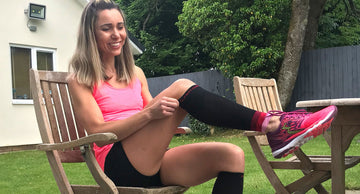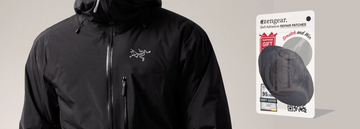Leg cramps are frequent and usually harmless, although they can last a while. They may occur at any time, but they are most common during sleep or when relaxing.
Leg cramps occur when a muscle in the leg contracts suddenly, causing sharp pain that makes it difficult to walk. This feeling can last from a few seconds to about 10 minutes affecting calf muscle that is located at the back of the lower leg, below the knee and sometimes the muscles located in the feet or the thighs. A muscle cramp feels like a twisted, contracted muscle that has been locked up. It's capable of being extremely unpleasant or even excruciating. After the cramp fades away, your muscles in the region might be sore for hours.
Causes of Leg Cramps
Leg cramps are caused by a variety of factors. Some of these factors are:
- ageing
- during exercise, when you put too much strain on your muscles. In hot or humid weather, this can be more difficult
- involuntary nerve discharges
- restriction in the blood supply
- pregnancy
- certain drugs such as medicine that lowers cholesterol (statins) or high blood pressure (diuretics)
- dehydration (not drinking enough fluids)
- liver disease (mostly due to excessive alcohol consumption)
Leg Cramps at Night
Leg cramps at night can affect anybody at any time, but they are more common among older people. 33% of persons over the age of 60 will have a leg cramp at night on average once every two months. About seven percent of children also suffer from this condition. Research shows that 75% of all reported leg cramps happen at night.
It is important not to confuse nocturnal leg cramps with the restless legs syndrome that also usually happens at night. The discomfort of restless legs syndrome is not severe. Restless legs syndrome is distressing, but it is not excruciating. It's a crawling sensation that encourages you to move your limbs. The restlessness fades when you move, but there is still discomfort.
What You Can Do to Stop Leg Cramps on Your Own
When a calf cramp happens, massaging the muscle and stretching it can help with the cramp, but most cramps go away on their own. Calf-stretching exercises may also help to decrease cramps, but they will not necessarily prevent them from happening. Stretching your calf muscle by flexing your foot upward may help. Jiggle your leg, massage it, or force yourself to walk if possible.
Another option to reduce the likelihood of leg cramps affecting your calf muscles is to wear calf compression sleeves during or after the exercise of running. Calf compression sleeves boost circulation to your lower legs while also providing calf muscle support during exercise, which may help keep the muscles supplied with essential minerals and nutrients.
Product Spotlight:
Calf Support Compression Sleeves for Shin Splints (20-30 mmHg / Class 2)
- TRUE GRADUATED COMPRESSION SLEEVES - provide calf compression support, increase oxygen flow & improve blood circulation
- OPTIMISED TWILL DESIGN FOR SHIN SPLINT SUPPORT - absorb impacts, protect from cramps & injuries, reduce leg swelling & fatigue; fabric contents: 65% nylon, 20% elastane, 15% lycra
- DOUBLE-STITCHED SEAMS ON TOP & BOTTOM - lightweight, anti-odour, moisture-wicking & breathable fabric can endure multiple washing cycles
- LEG SLEEVES FOR SPORTS - these footless compression socks alleviate shin pain, speed up muscle recovery & keep your legs warm, dry & healthy
How to Stretch Your Calf Muscles
- Face a wall and stretch out your arms until your fingertips just touch it. Make sure you're able to stand up straight and that your feet are flat on the ground.
- Lean forward while pressing your hands against the wall up until you can feel your calf muscles stretching. Hold for 3 or 4 seconds.
- Stand up straight once more.
- Repeat it for 5 minutes 3 times a day, then see how you feel.
If you have fewer cramps, you may only need to do the exercise once or twice a day.
Other Exercises for Stronger Calves
Skipping Rope. Jump rope or skipping is a fantastic cardiovascular exercise and a super total body workout. Skipping rope may be a fun exercise, but it can also help you burn calories and increase calf strength and endurance. Skipping rope also stimulates dynamic muscular action in the calves, resulting in sleek, toned calf muscles. The additional benefits of skipping rope include enhanced coordination, greater bone density, and a reduced risk of foot and ankle injuries.
Jump Squats. Squats are great for developing lower leg strength and power. This activity will quickly strengthen your muscles, giving you strong force. However, this exercise may not be suitable for everyone; if you have any discomfort or reduced mobility in your hips, knees, or ankles, you should avoid doing it.
Farmer's Walk. The farmer's walk is a basic, uncomplicated movement that requires you to walk and hold a dumbbell in each hand. Do not allow the dumbbells to lay on your thighs while you walk though; stand tall with your shoulder blades pulled back. Walk on your toes with your heels raised and off the ground if you want to work out your calf muscles even more.
Video Version






